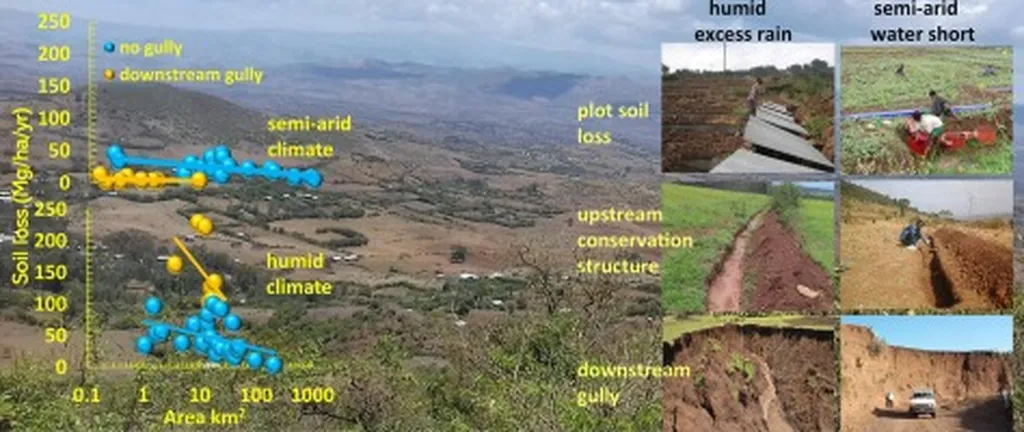In the rugged highlands of Ethiopia, where agriculture is both a lifeline and a vulnerable endeavor, a new study sheds light on the delicate balance between land use and soil erosion. Researchers have modeled future soil erosion vulnerability in the Gateno watershed of the Tekeze Basin under different land management scenarios, offering crucial insights for farmers, policymakers, and environmentalists alike.
The study, published in *Cogent Food & Agriculture*, employed a GIS-based Revised Universal Soil Loss Equation (RUSLE) model to predict soil erosion dynamics. The findings are stark: under baseline conditions, the watershed experiences an annual soil loss of 48,372 t ha−1 yr−1. However, the scenario changes dramatically with agricultural expansion, which doubles the erosion rate to 98,542 t ha−1 yr−1. “Agricultural expansion accelerates erosion by 104% compared to baseline,” notes lead author Wasie Asmamaw Ashagrie from the Department of Soil and Watershed Management at Woldia University. “This is a significant concern for the agricultural sector, as soil erosion directly impacts productivity and long-term sustainability.”
Conversely, reforestation emerges as a promising strategy, reducing total erosion to 41,826 t ha−1 yr−1 and cutting high-severity erosion by nearly 11%. “Reforestation cuts losses by 14%, highlighting vegetation’s stabilizing role,” Ashagrie explains. This finding underscores the potential for targeted reforestation efforts to mitigate erosion and protect agricultural lands.
The commercial implications for the agriculture sector are profound. Soil erosion diminishes soil fertility, reduces crop yields, and increases the cost of inputs like fertilizers and irrigation. By understanding the impact of different land management practices, farmers can make informed decisions that balance immediate productivity with long-term sustainability. Policymakers, too, can use these insights to develop scenario-specific land-use plans that promote climate-resilient development and land degradation neutrality.
The study also highlights the need for international cooperation and investment in sustainable land management practices. As climate change exacerbates environmental challenges, the lessons from the Gateno watershed can inform global efforts to achieve land degradation neutrality and support climate-resilient agriculture.
In the end, the research offers a roadmap for balancing agricultural productivity with environmental stewardship. As Ashagrie puts it, “These insights can help local populations adopt sustainable land-use practices, ensuring that the land remains productive for future generations.” By embracing these findings, the agricultural sector can navigate the complexities of land management and build a more resilient future.

